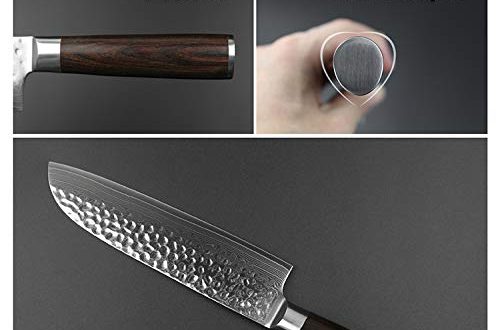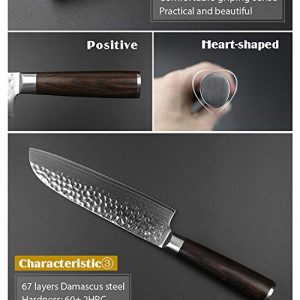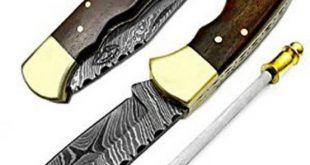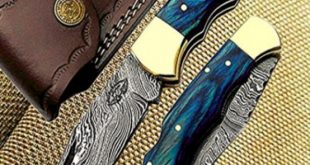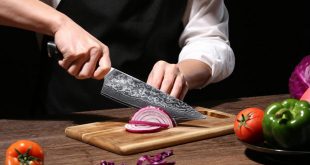If you have invested in a good quality Japanese Kitchen Knives, the best way to keep its edge sharp is to use a sharpening stone, also known as a sharpening stone. At first, this outdated tool may seem intimidating compared to a slotted knife sharpener. However, we believe that with a little practice and confidence, anyone can use one. Read on to learn how to use a sharpening stone safely to keep kitchen knives in top condition.
When to Use a Sharp Stone
Domestic knives can be sharpened quite infrequently. If a knife is not used every day, it is OK to sharpen it only once every few weeks. Knives that see heavier use will need sharpening more often. Japanese Kitchen Knives are designed to hold a sharp edge, but still, some professional chefs choose to sharpen their knives every day! As a general rule, the right time to sharpen a knife is as soon as you notice any loss of its original sharpness. Remember that sharper knives require less use effort and are less likely to slip and cause accidents.
Preparing Your Sharpening Stone for Use
Before you start sharpening, consider the following preparation tips.
- Prepare your sharpening stone for use soaking in clean, cold water. The optimal time to soak in a sharpening stone is the subject of some debate. However, it is usually sufficient to wait until no more bubbles emerge from the stone, showing that the water has penetrated the material as much as possible. This can take as little as 10 minutes.
- For safety, the stone should remain still and level during use. To ensure stability, it is best to mount it on a sharpening stone stand. Some sharpening stone supports can be safely installed through a kitchen sink, while others simply lift the stone and provide an additional purchase on the surface below.
- If sharpening on a table or counter, lift the stone to a comfortable height by stacking heavy cutting boards under it. Make sure you have water near your hand. Place a folded, slightly damp tea towel under the sharpening stone to absorb spillage and provide grip. The towel must not cause the stone to wobble!
Finally, keep your work space clutter free. Sharpening knives requires some arm movement, so it’s best not to have other objects along the way.
Holding the Knife Safely
The grip used to hold a knife is important when performing any task. When sharpening, aim for a light but secure grip that allows you to hold the knife constantly with minimal pressure.
- Hold the knife in your dominant hand with the flat blade and edge facing out of you.
- Place the tip of your finger flat index finger on top of the blade to stabilize it.
- With the other hand, place three fingertips flatter on top of the blade, closer to the point.
- Keep your fingers close to the spine of the leaf (i.e. away from the edge).
- To sharpen the other side of the blade, invert the knife so that the edge faces you.
- This time, place the thumb of your dominant hand on top of the blade.
- Place the fingers of the other hand as before, keeping them close to the spine of the leaf.
How to Use a Sharpening Stone
The following steps will help you get the best results when using a sharpening stone.
- To start sharpening, first wet the blade of your knife. Holding the knife as described above, place the flat blade on the sharpening stone. Lift the spine slightly until only the edge is touching the stone. The correct angle is quite flat: about 15 degrees.
- Without exerting any pressure on the blade with your fingers, gently slide the edge of the blade along the surface of the stone, moving in the direction of the spine. Move both hands together and keep the position of your wrists and elbows constant. Now you’ve made a stroke.
- Lift the blade and place it back on the sharpening stone gently, without altering the angle at any point. Continue sharpening this way, adjusting its position to work on the entire length of the sheet. Use as many strokes as necessary to get the edge you need.
- If using a standard double bezel knife, alter its grip to sharpen the blade evenly on both sides.
- Try to use the entire surface of the sharpening stone so that it does not develop a groove or tilt over time.
- Keep the blade moist and rinse the suspension regularly so that it does not become slippery. When finished, rinse and dry the blade before storing.
A support bracket attached to the knife as shown can help you learn the right angle.
Benefits of Using a Sharp Stone
This is the process we recommend to keep the edge of your Japanese kitchen knives. Now you know how to use a sharpening stone, please enjoy putting these tips into action. With regular sharpening, your knives will maintain their beautiful edge and continue to cut effortlessly, just as they were made to do. As you gain confidence with the technique, you may find that using a traditional sharpening stone is soothing as well as effective!
For more Japanese & Damascus knives visit our Amazon Store Best.Buy.Damascus1.
 Universal Bloggers
Universal Bloggers
